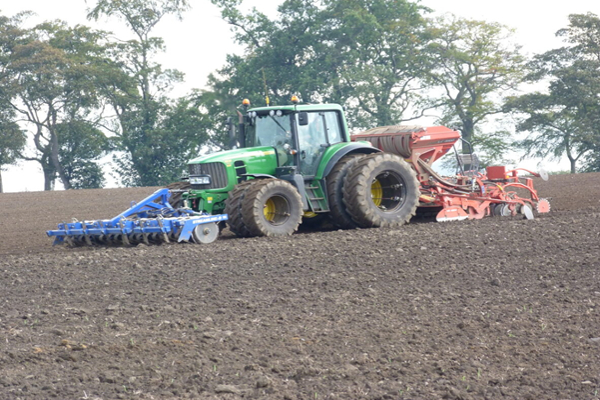Why and how to do an energy audit
22 November 2023Energy has become an expensive commodity in recent years and reviewing energy use through an energy audit is a practical step to help reduce costs and improve efficiency. There is also scope to reduce CO2 emissions and the carbon footprint of your business - an increasingly important currency.
What is the aim of an energy audit?
The energy audit seeks to establish current energy usage on the farm by assessing energy usage records and the equipment. It considers the different types of energy used and how much is being used on different parts of the farm.
By having this information, the business can then identify areas of improvement – from changes in practices, to updating or improving efficiency of equipment and looking at alternative power sources.
While some changes may require some investment, many of these improvements may actually be no- or low-cost, allowing quick, easy wins to be made.

While energy audits can be undertaken by professional companies, much of the information used is readily accessible to farmers and business owners, allowing a simple audit to be undertaken in-house that will help identify key areas for improvement and savings to be made.
How can I conduct my own energy audit?
Saving energy should be a team effort - whether that is staff or family members - involving them in the process gets buy-in. Make them aware of the costs involved and how they have a role to play.
Firstly collate all energy bills (gas, electricity, diesel etc.) and calculate the total you spend on each energy type per month along with the quantities. Using graphs in a spreadsheet will also allow you to track usage over time in a clear way that can be easily seen and understood by others in the business.
Ask the following questions of the data:
- Are there times when energy consumption is higher? If so, why?
- Check tariffs and contracts - are they right for you, check prices and service charges.
- Confirm whether bills are estimates or actual readings - if necessary, read meters monthly or even more frequently.

- Can you break the data down to individual tasks or equipment (e.g. grain drier fuel) - this can allow benchmarking with industry standards etc. Taking it a stage further can show energy per ton of grain or per animal.
- Is it worth considering sub-meters to allow better allocation between parts of the farm or enterprises?
- Hourly meters can also measure how long equipment and motors are running, which allows the energy usage to be calculated.
Keeping records not only allows more control but also helps monitor the effect of any changes you make.
Walk round the farm and look at all energy-using equipment, including tractors and vehicles. Think of everything in terms of how it uses energy and consider the following:
- Are equipment and machinery the right size for the job?
- What condition are they in - are they still working efficiently?
- How much power do they use? How long are they used for? Knowing the power and time tells us how much energy is used, e.g. a 20kW motor used one hour a day will use 1,040 units per year.

- Could a machine or motor be upgraded to a more efficient version, e.g. variable speed drive control on motors?
- Do sensors and thermostats work and are they accurate?
- Is machinery being used efficiently? Do operators know and understand how to maintain, set up and use machinery in the most fuel-efficient way?
- Look at building condition for leaks and cracks. Could insulation of buildings and pipework be improved or even installed where none is in place?
- How clean are roofs - could more use be made of natural light?
- How efficient is lighting and should it be upgraded to LED?
- Don’t ignore the farmhouse- the same principles apply.
Using all the above information, consider how you can reduce consumption or make savings. Even simple messages like turning lights and equipment off when not in use and the use of timers can make a big difference. Knowing your equipment and just how efficient it really is allows you to assess whether it is good, needs improvement or to be replaced, or perhaps even a change in practice and process is needed.

As energy audit can be conducted by farmers themselves, enabling future energy use and practices to be reviewed on farm so that optimising energy efficiency becomes second nature and an ongoing process.
Related FAS Materials
https://www.fas.scot/environment/climate-change/renewable-energy/
Related External Materials
https://www.farmingforabetterclimate.org/resource/introduction-to-energy-auditing/
Sign up to the FAS newsletter
Receive updates on news, events and publications from Scotland’s Farm Advisory Service
